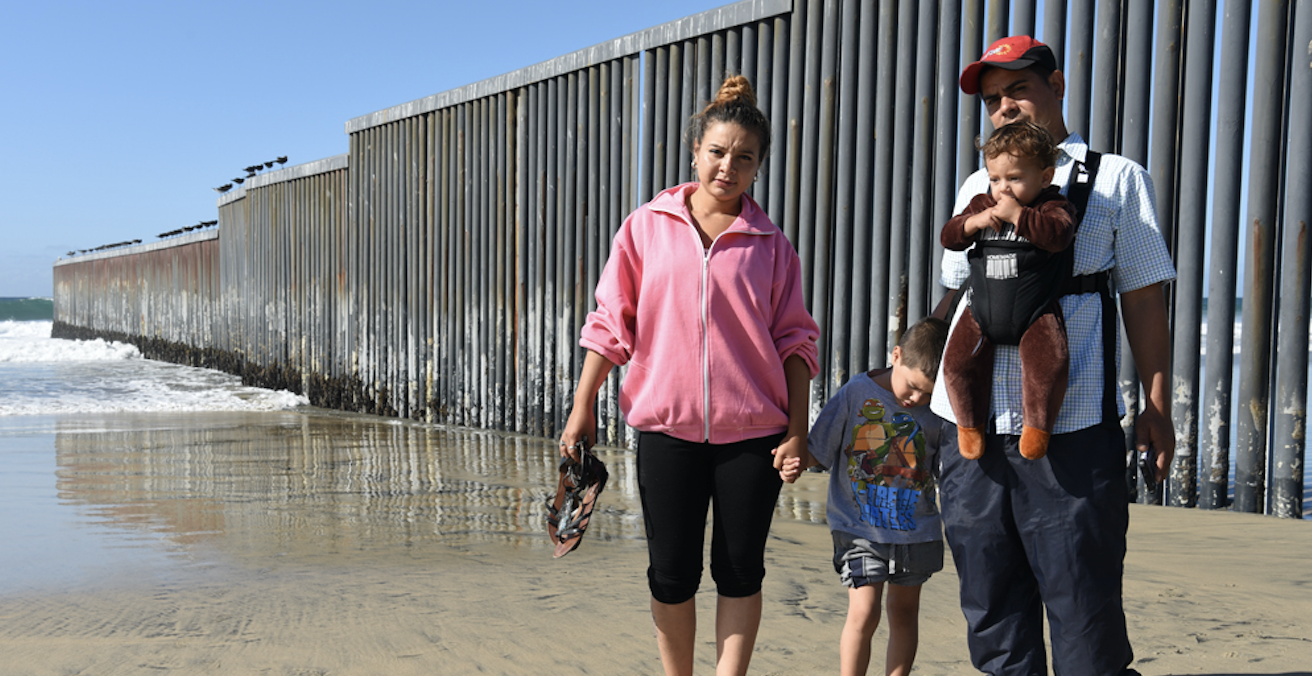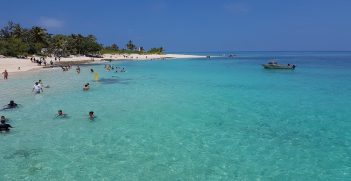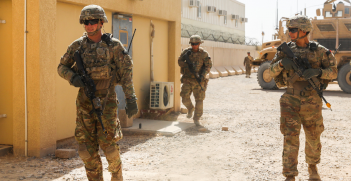The Migration Crisis in Central America: What role for Australia?

Due to high levels of unemployment and insecurity, citizens of Honduras, Guatemala and El Salvador continue to leave their countries in large numbers and head north towards the United States. The Australian government’s controversial agreement to take people from these countries in exchange for those on Nauru and Manus Island calls for critical reflection on current challenges in Central America and the dynamics of Australia-US cooperation.
Central America’s continuing migration crisis has deep implications for Mexico and the United States, but it is also relevant for Australia. In September 2016, the Turnbull government struck a deal with the Obama administration that required Australia to do more to assist refugees coming from regions such as Central America and Africa in exchange for the United States settling up to 1,250 asylum seekers detained on Nauru and Manus Island. The agreement saw the first wave of Latin American asylum seekers arrive in Australia in 2017. Despite President Donald Trump’s vocal opposition to the deal since coming into office, detainees from Australia’s regional detention centres continue to be processed for resettlement in the United States and more Latin Americans are likely to be resettled in Australia. It is essential, therefore, that the Australian government, its institutions and its citizens understand the challenges faced by migrants in Central America and scrutinize how the refugee deal fits into the dynamics of Australia-US cooperation.
The Central American migration crisis
Honduras, Guatemala and El Salvador are known as the “Northern Triangle” of Central America. These countries are home to the Mayan and Garifuna cultures and are revered for their natural beauty. But despite Central America’s charms, the region suffers from high levels of insecurity associated with the trafficking of drugs from the south to the north of the American continent. Moreover, these countries suffer from social problems such as high levels of corruption, political instability and limited income and opportunities for employment. Globally, they are ranked in the world’s top 10 for homicide, corruption, drug trafficking and gang violence.
This sad reality has forced thousands of Central American citizens to leave their homes, cultures and families behind. Over the past two years, thousands of Central American migrants have departed their countries on foot, in the so-called “migrant caravans,” with the goal of entering the United States. For many, the journey can be more than 3,000 kilometres and is filled with great danger. One section of a much-used route through the state of Veracruz in Mexico is known as the “route of death” because of the threat posed by kidnappers looking for ransoms. While the border crossing from Mexico into the United States can also be incredibly treacherous. Some critics argue that the United States uses the harsh desert terrain along its southwestern border to prevent migrants from entering the country. They argue that through a form of “prevention through deterrence” the United States closes the safer border crossings in urban areas and forces migrants to make the dangerous trek through rough desert terrain, thereby exposing themselves to the risks of dehydration and possible death. The widely reported case of seven-year-old Guatemalan girl Jackeline Caal, who died in December 2018, is just one among hundreds.
The efforts of US President Donald Trump and his government to stop the migrant caravans, including the deployment of more than 5,000 military troops to the Mexican border, have not stopped the movement of desperate people. At the end of March, Mexico’s Federal Interior Secretary Olga Sanchez Cordero said, “the mother of all caravans” of up to 20,000 people was preparing for departure from Central America. As Reports in April suggested new caravans were still forming in the Northern Triangle, the Trump administration announced that it would cut more than US $450 million in aid to Guatemala, Honduras and El Salvador for failing to halt the flow of migrants north. Arguably, by cutting the money that was going to fighting drug gangs in these countries, it is feasible this will only work to exacerbate the situation.
Amidst all this human suffering and the politicisation of the migrant caravans in the United States, it is necessary to build awareness in Australia of the plight of the migrants in Central America and to reflect upon what the crisis means for Australia’s refugee deal with the United States.
Australia’s role
Australia and the United States have historically maintained cooperative security and economic relations through the Australia, New Zealand and United States Security Treaty (ANZUS Treaty) and the Australia-United States Free Trade Agreement (AUSFTA). The agreement on refugees between Turnbull and Obama added a whole new dimension to this relationship. When President Trump took office, the deal looked set to risk turbulence in the Australia-US bilateral relationship and there were concerns the Trump administration would not honour the deal. The well publicised telephone call between Prime Minister Turnbull and President Trump illustrated the potential the deal had to make waves. Although President Trump characterised his predecessor’s agreement with Australia as “dumb,” Vice President Mike Pence eventually said the Trump administration would honour the deal. Subsequently, the first group of refugees from El Salvador arrived for resettlement in Australia in December 2017.
If Australia is to continue with this agreement, then more needs to be done to ensure greater understanding of the challenges faced by migrants in Central America to scrutinize how it fits into the dynamics of Australia-US cooperation. Australian policy analysts should begin by focusing on the following areas:
- Develop research to speak more effectively to policy institutions and the general public to generate knowledge about the crisis in Central America;
- Examine whether the current migration crisis in Central America is influencing the broader bilateral relationship between Australia and the United States, particularly as pressure grows on the US government to respond to demands for settlement;
- Build a deeper understanding of the pros, cons and implications for Australia of such refugee “swaps” with the United States and Asia-Pacific nations.
Finally, considering the call of the United Nations High Commissioner for Refugees (UNHCR) for Australia to end the separation of refugee families, it is necessary to reflect on whether Australia’s involvement in the Central American refugee crisis will lead to further family separations or, conversely, more compassionate approaches. Questions remain about what role Australia should play in the Central American migration crisis. Is the current support provided by Australia appropriate? Or should Australia try to do more? To answer these questions and build a better understanding of the situation it will be necessary for Australia to become more aware of the scope, purpose and the potential human impacts of the migration deal.
Nestor Agustin Guity Zapata is an associate professor at the National Autonomous University of Honduras. He has a Masters degree in Regional and Local Economic Development from the University of Valladolid in Spain and a Bachelor’s degree in Socioeconomic Development and Environment from Zamorano University in Honduras. His research interests include social security/insecurity, human rights, migration, education, housing problems, ethnic groups, the environment and sustainable development.
This article is published under a Creative Commons License and may be republished with attribution.





